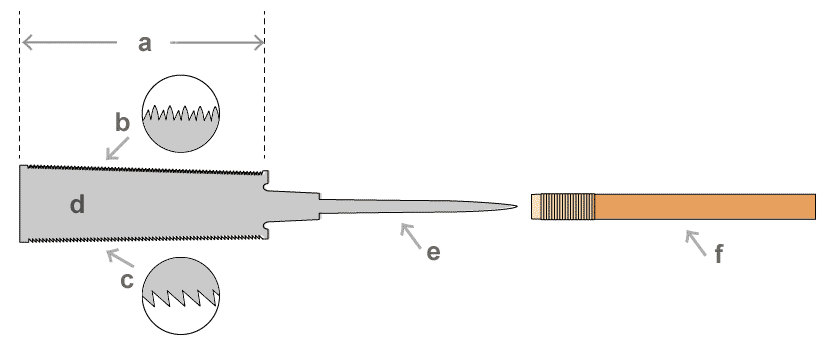|
||
 |
||
The blade can be 30cm, 27cm or 24cm long. On a 30cm blade the cutting edge would normally measure 27cm, the width would be 11.5cm, and there would be 12 to 13 teeth per sun 寸, 3.03cm. In the case of the 24cm blade, used to make furniture and house fittings, these measurements would be 21cm, 9cm, and 20 teeth per sun respectively.
Records show that the double-edged saw was displayed in the National Industrial Exhibition of 1877. Then, around 1895, it began to spread throughout the country, and in about 1915/16 the production of hand-made ryoubanoko began in Miki 三木, Hyougo prefecture, one of the original centers for the forging of tools. Later, from around 1920, the ryoubanoko was manufactured using machine production in all parts of the country.

parts of the Double-edged utility saw:
a) cutting edge b) crosscut theeth c) ripsaw theeth
d) blade e) insertion f) handle
a) cutting edge b) crosscut theeth c) ripsaw theeth
d) blade e) insertion f) handle
(C)2001 Japanese Architecture and Art Net Users System. No reproduction or republication without written permission.
掲載のテキスト・写真・イラストなど、全てのコンテンツの無断複製・転載を禁じます。

